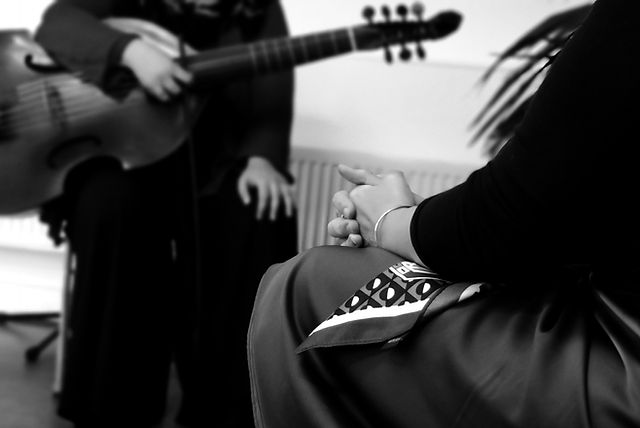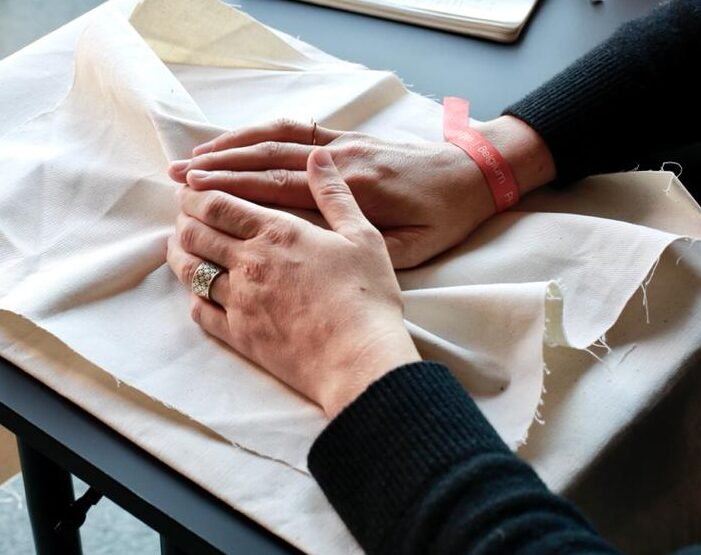Aside from our research work and work with museums, and presenting organisations, Through Art We Care also invests in the support of innovative arts projects addressing or incorporating a care dimension, whether it is a project working in a caring relational setting with vulnerable groups or a project addressing our wellbeing and care in a more direct way. Our first two associated artists are the collective Spa for Spirits and Anais Chabeur.
Spa for Spirits / Huskrooms
Collaborators
Lili Vanderstraeten
Leonie Buysse
& artistic team
Projects
Spa for Spirits
Huskrooms
Involvement
Artistic support and advice
Year
2024- 2026
Website
www.spaforspirits.com
www.huskrooms.com
Performers Leonie Buysse and Lili Vanderstraeten have been leading the artistic platform Spa for Spirits since 2020: a nonconventional wellness center operated by otherworldly creatures. Together with colleagues and experts from various artistic and life domains, the duo creates installations and performances that invite participants to engage in collective play and wonder, share physical and mental time and space. The Spa aims to stimulate its collaborators and visitors to engage in sensory-rich actions and participate in peculiar, perception-altering rituals. Together with their audience, they explore how the wellness center can promote well-being, rethinking how we want to live our lives: What moves us? What is helpful? What opens us to the world and others, and what makes us close off? Through this exploration, the Spa invites visitors to reconnect with their senses and simply be present in their bodies.
As a solo spinoff initiative by Lili, Huskrooms is an installation project that can be activated through performance and continues to develop organically. The work is constructed from carefully collected and reworked textiles. Like a living organism, the nomadic structure interweaves itself with its surroundings engaging deeply with space, textures, and people in the places where it temporarily nests. It creates space for encounter, ritual, togetherness, and action. Huskrooms offers a space to actively digest and make tangible feelings of sorrow, farewell, and mourning, while inviting visitors to sink into a different perception of time.

Anais Chabeur
Collaborators
Anaïs Chabeur
Julie Rodeyns
Laurence Cheval
Catalina Insignares
Hoda Siahtiri
Fiona Hallinan
Katrien Schaubroeck
Project
Visions for Crossing
Involvement
Artistic and grant writing advice and support
Year
2022- 2026
Website
www.anaischabeur.com
Visions for Crossing is an artistic exchange program dedicated to fostering a caring and intimate space where we can sensorially engage with the dying and explore alternative imaginaries around our mortal condition.
Initiated by artist Anaïs Chabeur, this program brings together a select group of artists and art workers to delve into the threshold process of “becoming imperceptible.” It proposes a creative and sensorial engagement with death, inviting us to look closely at the gestures of care we offer our deceased. The core question guiding this exploration is: How can we regain a comforting relationship with death?
Through shared experiences, Visions for Crossing aims to produce and disseminate embodied knowledge that actively resists the dramatic effects of deathcare commercialization and the increasing disappearance of the dying from modern society.

Sounds for the Soul
Collaborators
Project
Sounds For The Soul 2024-25
Involvement
Art mediation, facilitation, partnerships
Year
2024- 2025
Website
www.soundsforthesoul.org
The project “Sounds for the Soul” by DAS HAUS (a Brussels-based performance and workspace for innovative classical music practices) is a unique initiative focused on bringing the emotional power of live classical music directly to individuals. Rather than traditional concerts, it offers personalized, one-on-one musical encounters in the comfort of a person’s home. The professional classical musicians involved are specially trained to connect empathetically with individuals who might be struggling with difficult emotions, loneliness, stress, or other life challenges. The core idea is that music can be a powerful tool for solace and self-reflection, providing a way to express feelings that words often cannot. The musician listens to the individual’s experiences and then performs a piece of music chosen to resonate with their current emotional state, offering a unique and intimate “reflection in music.” It’s a way of extending kindness and artistic comfort to those who need it most.



